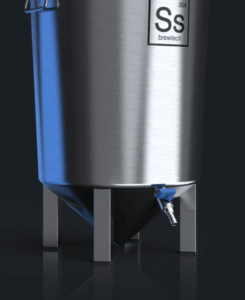Leave the Bottom
Wash
If you use a typical fermenter the bottom valve will let the heavy bottom yeast remain in the container as it drains the top lighter liquids. This is great if it’s a wash. Then yes, the yeast will remain behind.
But when using a mash, the liquid has pulp particles that are larger than particles in a wash. A mash requires a different procedure.
Mash
In a mash, comprised of grains, and after fermentation the bottom most pulp is thick and concentrated. You don’t want to be distilling that thick portion. It is about the 2 to 3 inches of the bottom most liquid. It has yeast throughout, and it will scorch the bottom of the pot when distilling. You have already squeezed all the converted starches out of the pulp with a juicer or fruit press so the starches should have been converted to alcohol… The alcohol will be in the top layer.
You can put the bottom heavy material in a sparge bag and squeeze out liquid. But the yeast settling at the bottom from the clearing agent will be in it as well as other yeast that settled prior. Not a good idea. The converted alcohol has already floated to the top, so there will be minimal alcohol in the thick bottom mixture.
The mash needs to be in a see-through carboy that is glass. Alcohol deteriorates plastic and then carcinogenic plastics will be in your end product. The micro plastic particles are lighter than alcohol so they have an excellent chance of being in your alcohol. You won’t even see them. Smell a washed PLASTIC carboy that has been used for alcohol fermentation several times. That should convince you that you only want to use a glass carboy.
You can clearly see the thick sediment 2 to 3 inches from the bottom. You need to siphon the thinner liquids above and leave the heavy sediments including yeast at the bottom to be thrown out.

